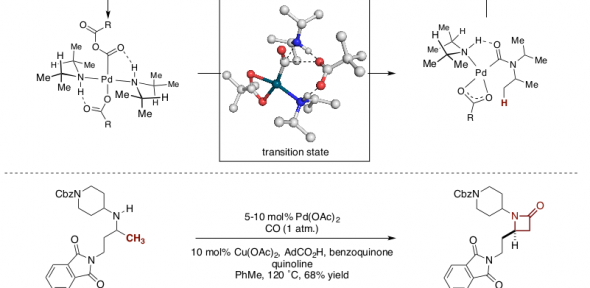
C-H bond activation process courtesy Gaunt Group
Researchers in the Gaunt group have developed a general C-H bond activation process to make amines, which can be used in pharmaceutical agents, agrochemicals and functional materials.
Methods for the synthesis and functionalization of amines are intrinsically important to a variety of chemical applications, such as the synthesis of medicinal agents, biologically active molecules and functional materials.
In a paper published in Science, the researchers describe how the process they developed combines readily available aliphatic amines and the feedstock gas carbon monoxide to form synthetically versatile value-added amide products.
In contrast to existing methods of amine synthesis, the new method involves a general catalytic process capable of directly introducing new functionality onto the framework of readily accessible and simple amines.
“This work is important because it provides a distinct and very general way to make amines, a ubiquitous functionality that appears in pharmaceutical agents, agrochemicals and functional materials,” says Professor Matthew Gaunt, who led the research. “Not only can we make complex small molecule scaffolds that will serve as novel building blocks for synthesis, but we can also apply the process to complex molecules, such as medicines, which allows us to make analogues of potential drugs in just one step.
“Traditionally amines have not been compatible with C–H activation because they deactivate metal catalysts such as palladium acetate. However, we designed a new reaction pathway that gets round this problem and has allowed us to develop an extremely general process.”
The research was funded by grants from the EPSRC, ERC, Royal Society and Herchel Smith Foundation.
